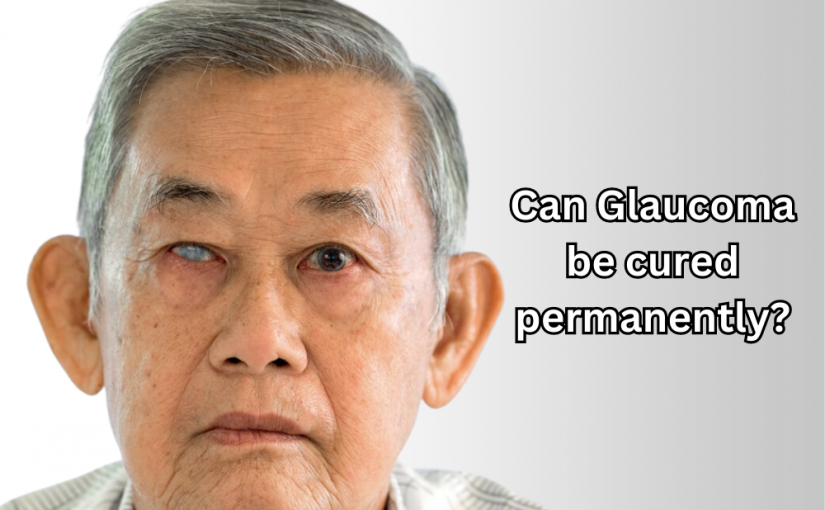Can Glaucoma be cured permanently?
Glaucoma is a group of diseases that cause damage to the optic nerve of the eye. The optic nerve carries visual signals to the brain from the retina, giving vision. This condition leads to slow damage to the optic nerve, giving rise to steady vision loss and permanent blindness.
As the damage takes place gradually, it is frequently without signs and goes ignored until it is too late. As glaucoma develops, it may cause a high risk of falls, poor quality of life, lower mobility, and trouble driving. Read more to learn Can Glaucoma be cured permanently?
Types of Glaucoma:
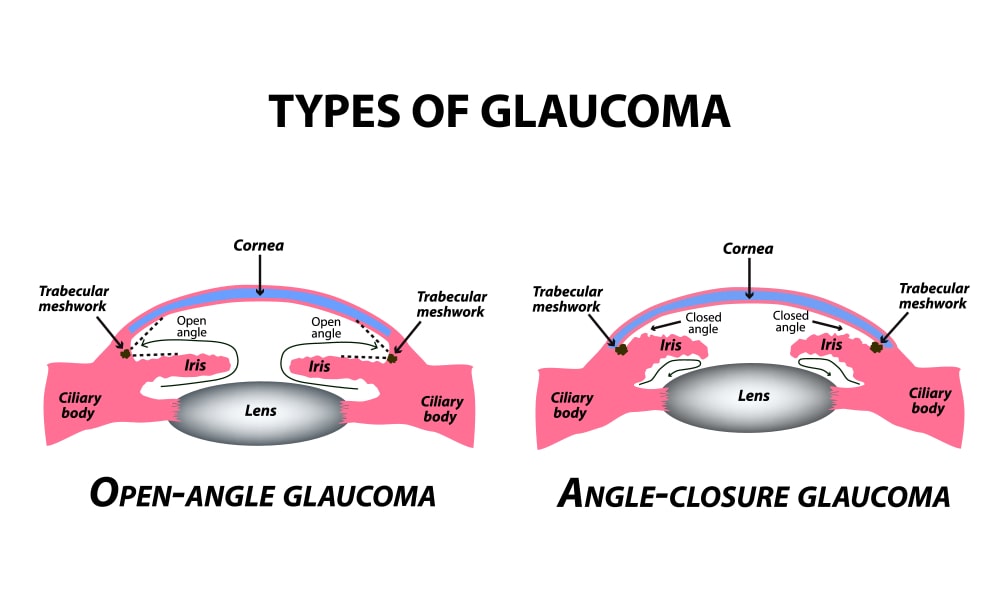
Open-Angle Glaucoma:
It is the most common type of glaucoma, however, there are different forms. In all types of open-angle glaucoma, an error in the eye’s drainage angle is seen even if it seems to open and seems normal in microscopic assessments. The drainage angle is where the iris meets a tissue known as the trabecular meshwork. Iris is the colored part of your eye.
Angle-Closure Glaucoma:
It is also known as primary angle-closure glaucoma, narrow-angle glaucoma, or closed-angle glaucoma. In all these types of glaucoma, a mechanical problem is seen with the drainage angle of the eye. This implies that the iris is located too close to the trabecular meshwork. This results in the obstruction of the drainage angle that stops fluid from being properly drained from the eye. Learn more about whether Can Glaucoma be cured permanently?
Where does Glaucoma start?
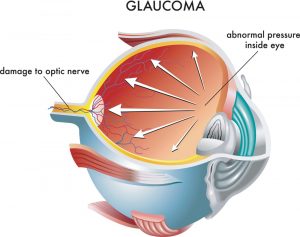
Glaucoma refers to an eye condition that results in vision loss or blindness.
In glaucoma, damage occurs to the back of your eye known as the optic nerve.
The signs may initiate gradually and you can’t notice them.
The only way to understand whether you suffer from glaucoma is to get a thorough dilated eye test.
Glaucoma Symptoms:
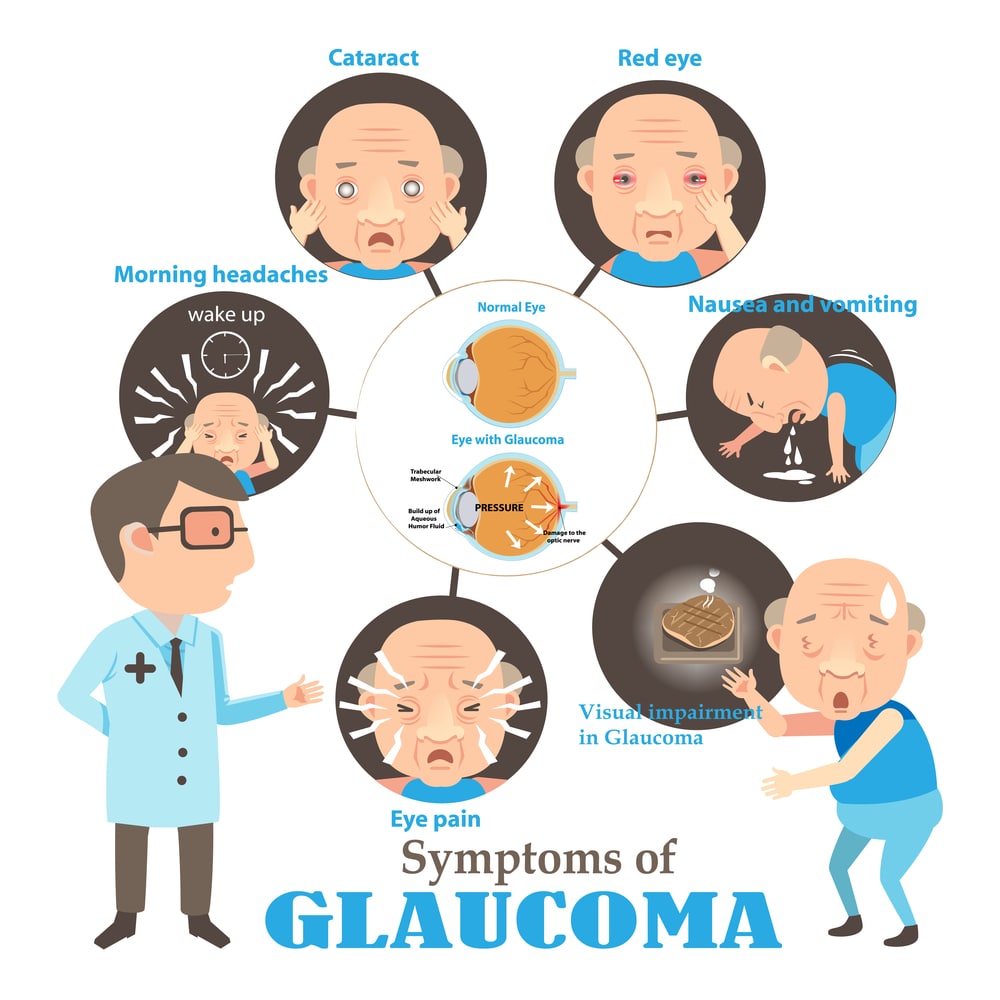
Glaucoma damage is an irreversible condition, hence you require early detection and treatment to stop blindness. Closed-angle glaucoma presents with more serious signs that tend to appear abruptly. With any form of glaucoma, you may see:
- Headache
- Eye pain or pressure
- Red eyes
- Low vision, hazy vision, pointed vision (tunnel vision), or blind spots.
- Nausea and vomiting.
- Rainbow-colored halos around lights.
How is Glaucoma diagnosed?
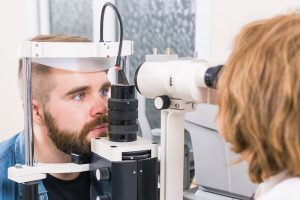
- Your doctor would review your medical history and carry out a thorough eye inspection. Your healthcare provider might carry out several tests, such as:
- Testing for damage to the optic nerve using a dilated eye test and imaging tests
- Measurement of intraocular pressure, also known as tonometry
- Measurement of corneal thickness using an examination known as pachymetry
- Inspection of the drainage angle, also called gonioscopy
- Evaluating the areas of vision loss, also called a visual field test.
This blog gives you a clear insight into whether Can Glaucoma be cured permanently?
Can Glaucoma be cured permanently?

Glaucoma is the prevalent reason for permanent blindness all over the world. It is estimated that around 3 million individuals experience glaucoma, and this number is expected to increase to 6.3 million in the following 30 years.
Glaucoma is found to occur more commonly in adults above 60 years of age, it might also develop at any age. There is currently no cure for glaucoma, vision loss may be stopped or slowed if the condition is diagnosed and treated early.
What is the best cure for Glaucoma?
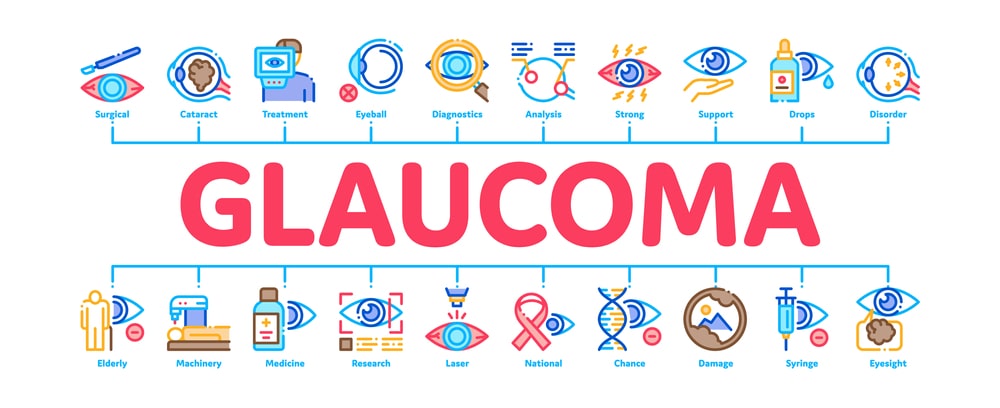
Your treatment would mainly be based on the type of glaucoma you have. Primary open-angle glaucoma, the most common type of glaucoma can be generally treated using eye drops. Laser treatment or surgery can be a great help if drops fail to help. If you want to read about whether Can Glaucoma be cured permanently, OffshoreCheapMeds is the right platform for you.
Treatment for other types of Glaucoma can be:
- Primary Angle Closure Glaucoma: Instant treatment in the hospital using medications for lowering the pressure in the eye, subsequently laser treatment can help.
- Secondary Glaucoma: Eye drops, surgery, or laser treatment, based on the underlying cause of glaucoma.
- Childhood Glaucoma: surgery for rectifying the problem in the eye that caused accumulation of fluid and pressure.
There is no permanent cure for Glaucoma, it can only be managed. Can Glaucoma be cured permanently is explained further in this article.
The major Glaucoma treatments are stated below:
Eyedrops:

Eyedrops are the major treatment for glaucoma. There are numerous types that may be used, however, they all act by lowering the pressure in your eyes. They’re usually used once or four times a day. It’s vital to use them as per directions, even though you haven’t observed any vision problems.
Your sight might be at risk if you don’t adhere to the suggested treatment. You might require trying different types before you find the one that acts best for you.
At times, you might require using of one type at a time. Eyedrops might result in unpleasant side effects, like eye irritation, and a few might not be appropriate for people with underlying conditions.
Glaucoma is generally controlled with the help of eyedrop medicine such as Lumigan. These can be used each day and they help to decrease eye pressure. Drops work by lowering the amount of aqueous fluid the eye produces. Some drops work by decreasing the pressure by helping fluid flow better via the drainage angle.
It is always better not to change or stop using your Glaucoma medicines without discussing them with the concerned ophthalmologist. If you are on the point of running out of your medicine, ask your ophthalmologist if you must have your prescription refilled.
Prescription Eye Drop medications can be:
- Prostaglandins: These help to enhance the outflow of the fluid in your eye, aiming to decrease eye pressure. Medications can be Latanoprost (Xalatan), Bimatoprost (Lumigan), Travoprost (Travatan Z).
- Miotic or Cholinergic agents: These help to enhance the outflow of fluid from your eye. Medication can be Pilocarpine (Isopto Carpine).
- Alpha-Adrenergic agonists: This help to decrease the formation of the fluid that flows all over the inside of your eye. In addition, these agents help to increase fluid outflow in your eye. Medications belonging to this class can be Apraclonidine (Iopidine) and Brimonidine (Alphagan).
- Beta-blockers: These help decrease fluid formation in your eye, aiming to reduce eye pressure. Examples can be Betaxolol (Betoptic) and Timolol.
- Carbonic Anhydrase inhibitors: These medications help to decrease the formation of fluid in your eye. A drug belonging to this category can be Brinzolamide (Azopt). Can Glaucoma be cured permanently can be understood in this article.
Laser treatment:
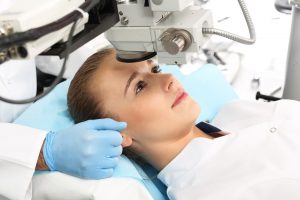
Laser treatment might be suitable if eyedrops don’t improve your signs. Here, a high-energy beam of light is judiciously aimed at the part of your eye to stop fluid from accumulating inside it. Laser treatment can be generally performed while you’re awake.
Local anesthetic drops can be helpful to numb your eyes, you might just feel a brief ache or heat during the process. You might still require using eyedrops after going for laser treatment.
There are 2 major types of laser surgery to treat glaucoma. They assist the aqueous drain from the eye. These techniques are generally performed in the ophthalmologist’s office or an outpatient surgery center.
- Iridotomy: This surgery is useful for individuals having angle-closure glaucoma. The ophthalmologist makes use of a laser to develop a tiny hole in the iris. This hole aids in fluid flow to the drainage angle.
- Trabeculoplasty: This form of surgery is for individuals having open-angle glaucoma and can be used in place of or together with medicines. In this, an eye surgeon makes use of a laser to make the drainage angle work better. In this way, fluid oozes out properly and eye pressure gets decreased.
Successful treatment of glaucoma is a team effort between you and your healthcare provider. Your ophthalmologist would recommend your glaucoma treatment. It is up to you to follow your physician’s guidelines and make use of your eye drops.
Once you are using medicines for glaucoma, your ophthalmologist might wish to see you regularly. You can go for an Ophthalmologist visit approximately every 3–6 months. OffshoreCheapMeds gives you a clear understanding around Can Glaucoma be cured permanently.
Surgery:

Surgery might be advisable in rare cases where treatment with eyedrops or lasers has failed. The most common kind of surgery for glaucoma is known as Trabeculectomy. It includes the removal of part of the eye-drainage tubes to permit fluid to drain effortlessly.
Glaucoma surgery can be performed under local anesthesia or general anesthesia. Many individuals might not require the use of eyedrops anymore following trabeculectomy. You must not be in too much pain subsequent to surgery.
Your healthcare provider must discuss which type of surgery they suggest, also if there are any risks and benefits before you choose whether to go ahead. Can Glaucoma be cured permanently, the answer to this question can be found in this article.
How to cure Glaucoma naturally?

A few common natural remedies for Glaucoma can be:
- Healthy and balanced diet.
- Marijuana/Cannabis.
- Regular physical activity.
- Relaxation procedures.
- Sleeping in an elevated head position.
- Herbal and vitamin supplements.
You no longer need to think about whether Can Glaucoma be cured permanently; the answer is present here.
How to cure Glaucoma with Homeopathy?

To date, no permanent cure exists for Glaucoma. Still, 5 best homeopathic medications for glaucoma include:
- Phosphorus: One of the most effective homeopathic medications for glaucoma with cataracts.
- Eserinum: It can be used for glaucoma with reduced pupil contraction.
- Spigelia: It can be effective for glaucoma with deep pain in the sockets.
- Silicea: It helps in glaucoma with inflammation of the lachrymal duct.
- Rhus Tox: It can be efficacious for glaucoma due to injury to the eye.
No more debates around whether Can Glaucoma be cured permanently.
What foods cure Glaucoma?
Leafy Green Vegetables:

These are key to optimum health, however, a diet involving leafy greens can also offer extra benefits to people suffering from glaucoma.
Studies found that individuals who consume more green veggies such as kale and spinach have a 20 to 30% lower risk of developing glaucoma.
The consumption of nitrate-rich leafy vegetables such as spinach and kale could reduce the risk of open-angle glaucoma by up to 30%, according to research.
Fruits and Vegetables:

These are good sources of vitamins A, C, and the antioxidants zeaxanthin and lutein. These are compounds found to protect against oxidative stress related to damage to the optic nerve and other eye tissues in glaucoma.
Bananas, avocados, pumpkin seeds, and black beans are great sources to help you meet the recommended daily allowance of 300-400 magnesium. Though more research is needed, preliminary studies suggest that dietary magnesium may benefit people with glaucoma by improving blood flow to the eye.
Nuts and Seeds:

These are again vital sources of vitamin E, which is important as the vitamin helps keep cells healthy and guards them against damage due to free radicals. This disintegrates the defensive retinal tissues present in the eye.
Sunflower seeds (aid in reducing the risk of cataracts and age-associated macular degeneration), hazelnuts, and pistachios (contain high levels of lutein and zeaxanthin), almonds are all important sources.
Fish:

Salmon, halibut, tuna, and sardines comprise high levels of omega-3 fats. Studies found that fish might aid in reducing the risk of developing eye problems later in life.
In addition, the consumption of more omega-3s has been found to reduce glaucoma-linked pressure in the eye.
Fish such as salmon, tuna, sardines, and halibut contain high levels of omega-3 fatty acids, which research suggests may help reduce the risk of developing eye disease later in life.
Other Foods:

Bananas, pumpkin seeds, black beans, and avocados, all are found to be important sources to assist you to meet the daily allowance of 300-400 magnesium. Even if more research is required, studies propose that dietary magnesium might benefit individuals experiencing glaucoma by improving the flow of blood to the eye.
In addition, it might aid in protecting the retinal ganglion cells. These cells are useful for processing the visual information in the eye and transferring it to the brain via the optic nerve. These foods can only help in managing Glaucoma, it can’t be cured permanently. Keep on reading to know if Can Glaucoma be cured permanently?
FAQs:
How often does Glaucoma lead to blindness?
Glaucoma leads to blindness in around 15% to 20% of patients in a minimum of one eye in 15 to 20 years of follow-up as per studies.
How many Glaucoma suspects get Glaucoma?
Glaucoma suspects develop risk factors for Glaucoma, however, no proven damage has been observed to the optic nerve yet. Many suspects would never get glaucoma. However, once there is a vision loss, it is impossible to restore it, hence the key is to choose whom to treat among suspects.
How often is Glaucoma misdiagnosed?
Glaucoma is the major reason for disc cupping, it is found that 20% of people might be misdiagnosed.
How often should Glaucoma patients be checked?
Glaucoma patients need to be checked every 2 years.
When Glaucoma get worse?
As Glaucoma occurs slowly, most individuals can’t tell that their vision is modifying at first. But as the condition deteriorates, you might begin noticing that you can’t see things off to the side any longer. Without treatment, Glaucoma might result in blindness.
What is the most effective treatment for Glaucoma?
Eyedrops are the most effective treatment for glaucoma. Eye drops work by decreasing the pressure in your eyes. They’re usually used between one and four times a day. More details around Can Glaucoma be cured permanently are available on this website, keep on reading.
References:
- https://www.health.harvard.edu/blog/glaucoma-whats-new-and-what-do-i-need-to-know-2021031122104
- https://www.nhs.uk/conditions/glaucoma/treatments/
- https://glaucoma.org/glaucoma-and-nutrition-why-what-you-eat-matters/
- https://www.nei.nih.gov/learn-about-eye-health/eye-conditions-and-diseases/glaucoma

